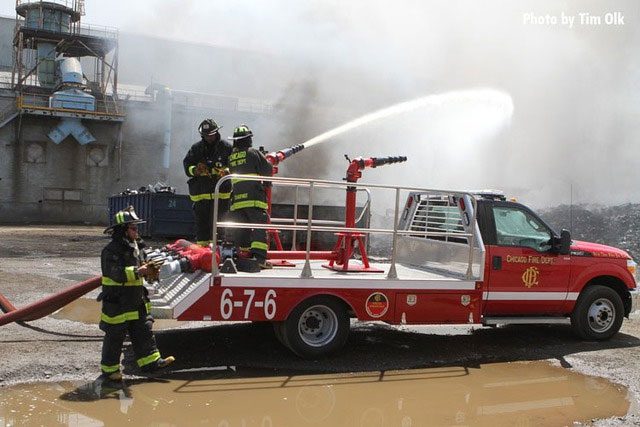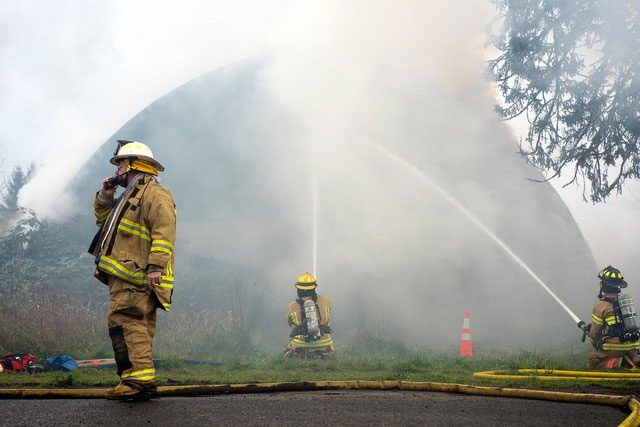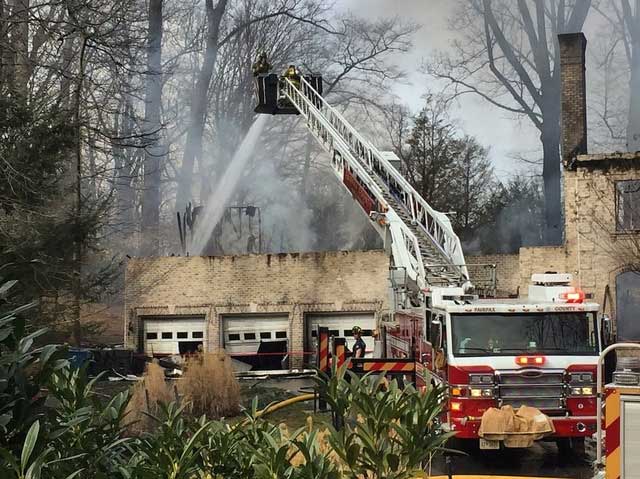Whenever a fire erupts and spreads, we can always witness scenes of brave firefighters rushing into the flames, disregarding their own safety, wielding high-pressure hoses to spray water onto the walls quickly. What is the unique rationale behind this secretive operation? Why do they not target the source of the fire directly?
Firefighters spray water onto walls to utilize the reflection effect to direct the water flow toward the fire source. When water hits the wall, it tends to bounce back due to the smooth and reflective nature of the surface.
By doing so, firefighters only need to aim the hose at a specific angle on the wall to spray water, allowing them to accurately guide the water flow to the fire source and quickly extinguish the flames. Compared to spraying water directly onto the fire, using wall reflection can better control the direction and range of the water flow, enhancing the accuracy and effectiveness of firefighting.

One of the purposes of firefighters spraying water onto walls is to control the fire by effectively diffusing water vapor. When water contacts the wall, fog is formed, and small water droplets quickly disperse into the air. This water vapor can absorb heat around the fire source and carry it away. Simultaneously, the water vapor can also prevent oxygen from reaching the fire source, thereby reducing the chances of fire spreading. The diffusion effect of water vapor is more effective than simply spraying water directly onto the fire, as it can maximize the surface tension of water and the dynamics of air flow to spread droplets around the fire.
Splashing water onto walls can also create a water barrier, providing insulation, cooling, and extinguishing the fire. Fire scenes often come with significant amounts of smoke and toxic gases, posing health risks to firefighters. By spraying water onto walls, a layer of water can be created to cover the area around the fire source, preventing the spread of smoke and harmful gases.
Moreover, due to water’s excellent heat absorption capacity, the water layer sprayed onto the wall will absorb the heat emitted from the fire source and reduce the intensity of the flames, thereby effectively slowing the fire’s spread and creating a safer firefighting environment.

Firefighters spraying water onto walls can also reduce the production of smoke and harmful substances. Smoke from fires often poses significant threats to human life and safety because it contains toxic gases and particulate matter. The water vapor formed when spraying can absorb particulate matter in the smoke and reduce the concentration of toxic gases. This way, human respiratory systems are less vulnerable, also facilitating the work of firefighters.
Spraying water onto walls can also prevent subsequent fires. When a fire is large and difficult to control, spraying water onto the walls can dampen nearby objects and surfaces, reducing the temperature of flammable materials and the fire itself, thus preventing further spread. Additionally, spraying water onto walls can eliminate sparks and remnants of flames from the fire scene, reducing the risk of reignition.
Water is the primary tool for extinguishing fires, but the amount of water consumed during a fire is substantial. If firefighters spray directly onto the flames, a large portion of the water will be absorbed and evaporated by the fire, leading to increased water consumption. However, by spraying water onto walls, the water flow can be directed more effectively into the burning area, allowing for more water to be used to extinguish the flames. At the same time, the reflection effect from the walls can also spread the sprayed water over a larger area, covering more fire sources and further reducing water consumption.

Spraying water directly onto the fire can intensify the flames, especially in wooden structures. Wood is highly flammable due to the high combustion temperature; by spraying water onto walls and ceilings, the temperature of these surfaces can be lowered, mitigating the fire damage to the building.
Despite the numerous benefits of using wall reflection as a firefighting tactic, there are some limitations. First, firefighters need to have sound judgment and solid experience in selecting the appropriate wall for reflective water spraying to ensure that the water flow can accurately reach the fire source. Additionally, wall reflection is only a supplementary method; for fire sources with unusual shapes or complex burning conditions, firefighters still need to implement other firefighting measures.

Fires create extremely high-temperature conditions that are very challenging for firefighters and accelerate the spread of flames. The water vapor formed during spraying can effectively reduce the temperature around the fire source, thereby slowing down the fire’s development process. During a fire, flames emit significant amounts of heat, increasing the risk of burns to surrounding objects. The water vapor generated from spraying can absorb this heat and evaporate quickly, thereby lowering the temperature around the flames. This not only helps firefighters approach the fire better but also protects the safety of those nearby.


















































